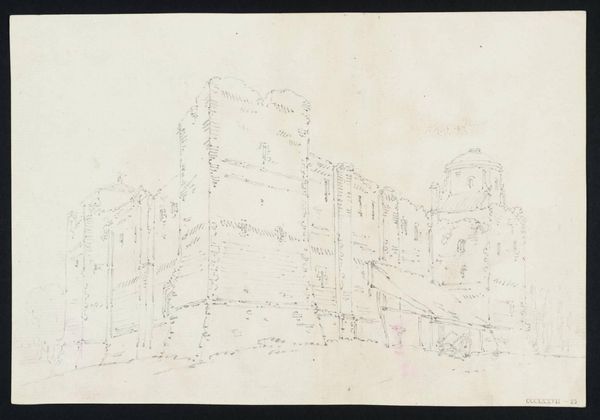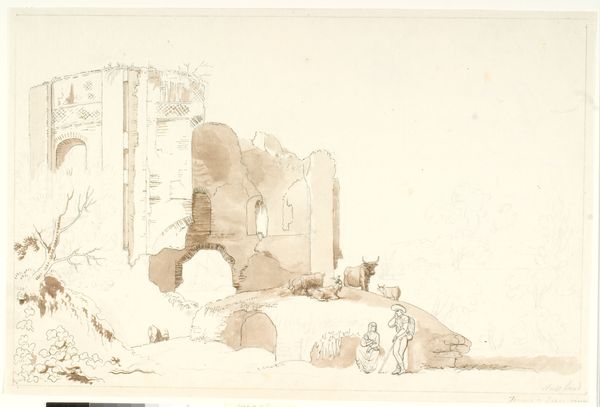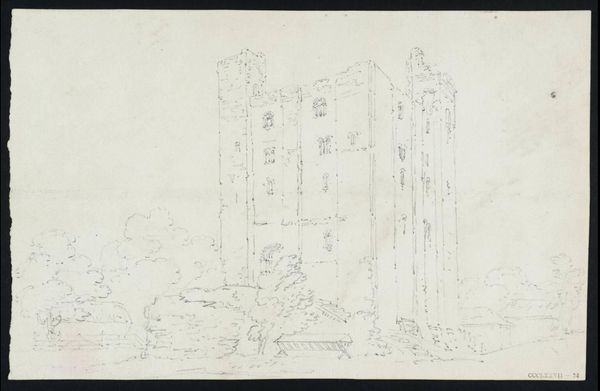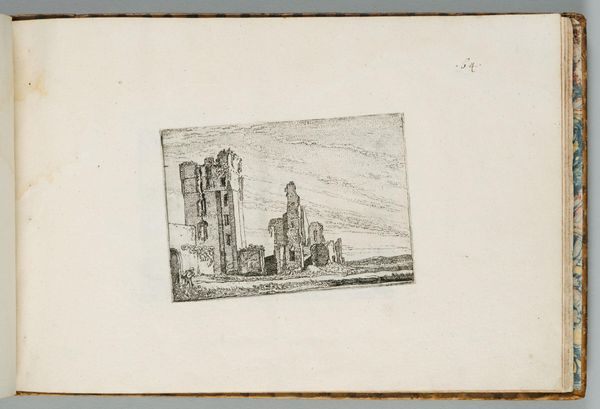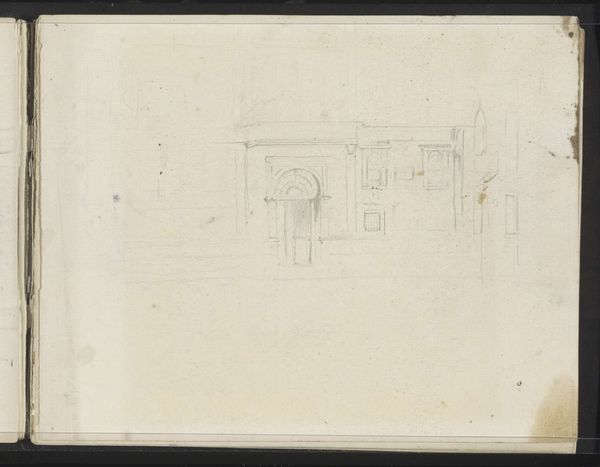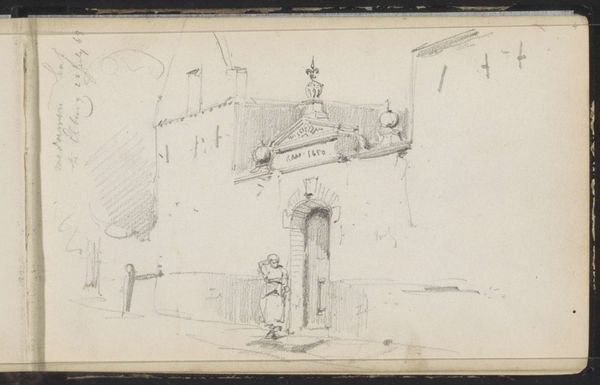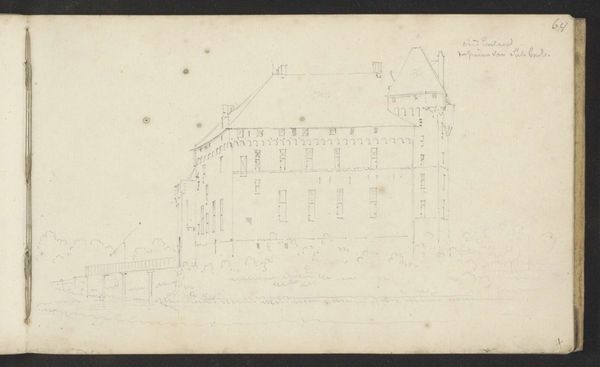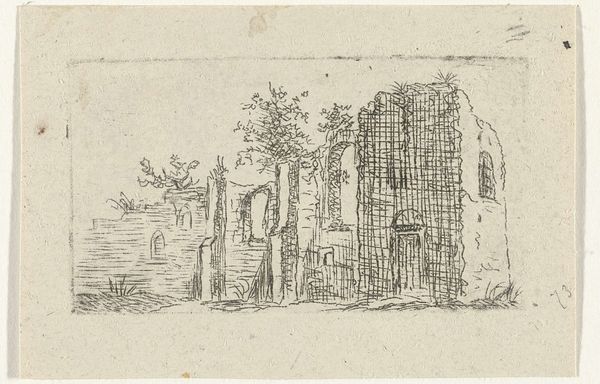
drawing, paper, ink
#
drawing
#
aged paper
#
pen sketch
#
sketch book
#
landscape
#
paper
#
personal sketchbook
#
ink
#
sketchwork
#
pen-ink sketch
#
line
#
pen work
#
sketchbook drawing
#
cityscape
#
storyboard and sketchbook work
#
sketchbook art
#
realism
Copyright: Rijks Museum: Open Domain
This ink drawing portrays the Ruïne van kasteel Brederode te Santpoort, captured by Abraham de Haen the Younger. It is not merely a depiction of crumbling stone; it is an exploration of time, history, and memory itself. The ruin, a symbol of decay, echoes motifs found throughout art history. We are confronted with this image across classical antiquity to romanticist paintings, from Piranesi's etchings of Roman ruins to the evocative landscapes of Caspar David Friedrich. The presence of a ruin invites contemplation on the transience of human endeavor, but it also evokes the past and a sense of history. Ruins stir profound psychological depths. They tap into our collective memory and subconscious fears of mortality and oblivion. Yet, ruins are not just about loss; they also signify resilience, the ability of stories and echoes to endure even when physical forms crumble. The cyclical nature of history is evident in the way ruins continue to inspire and resonate across different eras, their symbolic power renewed with each passing generation.
Comments
No comments
Be the first to comment and join the conversation on the ultimate creative platform.

